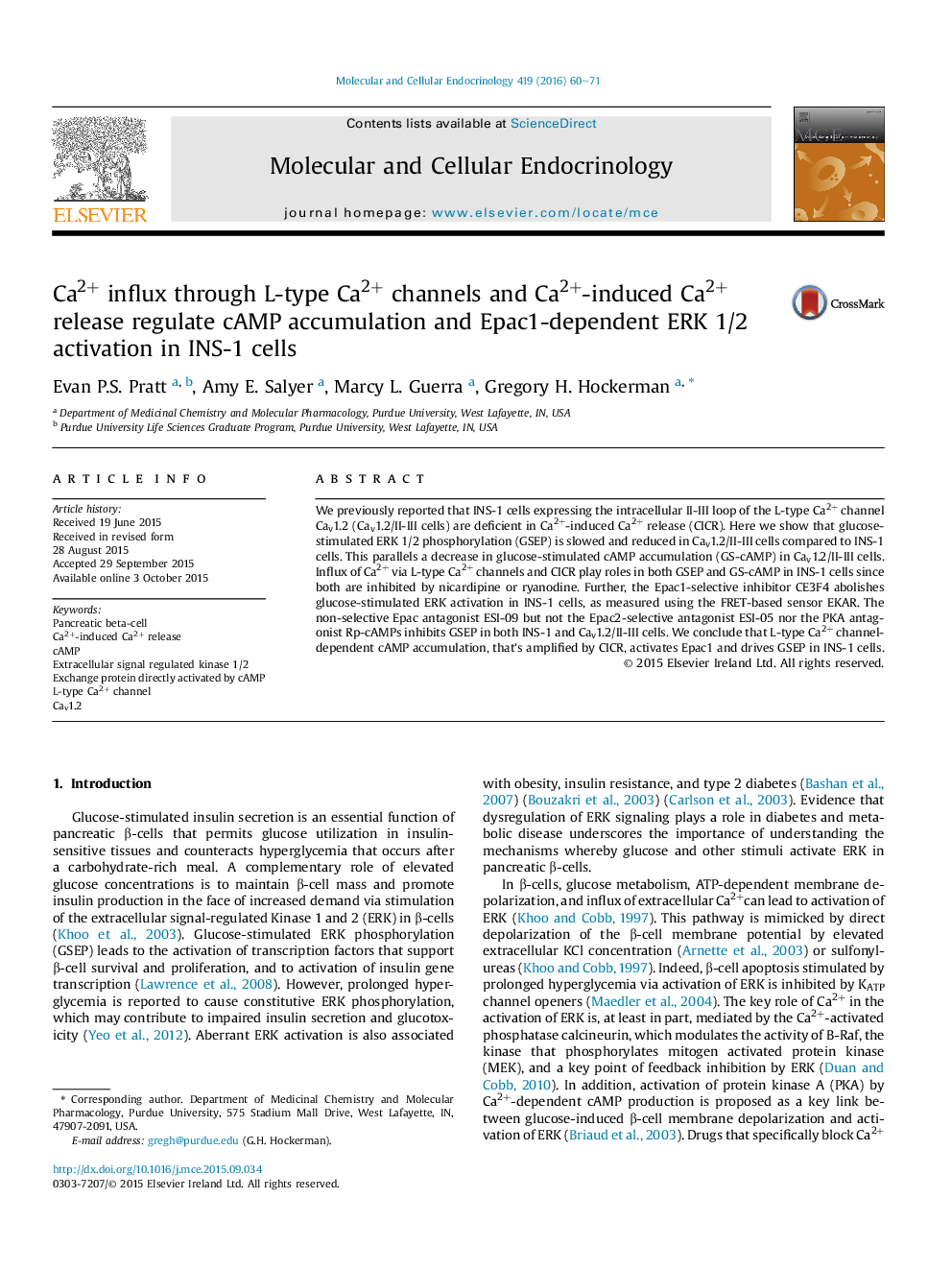| Article ID | Journal | Published Year | Pages | File Type |
|---|---|---|---|---|
| 2195713 | Molecular and Cellular Endocrinology | 2016 | 12 Pages |
•Ca2+-dependent, glucose-stimulated cAMP accumulation initiates ERK activation in INS-1 cells.•Both CICR and Ca2+ flux across the membrane contribute to this process.•Disruption of CICR has a strong inhibitory effect on the kinetics of glucose-stimulated ERK activation.•EPAC1 transduces the glucose-dependent rise in cAMP concentration into activation of the B-Raf/MEK/ERK pathway.
We previously reported that INS-1 cells expressing the intracellular II-III loop of the L-type Ca2+ channel Cav1.2 (Cav1.2/II-III cells) are deficient in Ca2+-induced Ca2+ release (CICR). Here we show that glucose-stimulated ERK 1/2 phosphorylation (GSEP) is slowed and reduced in Cav1.2/II-III cells compared to INS-1 cells. This parallels a decrease in glucose-stimulated cAMP accumulation (GS-cAMP) in Cav1.2/II-III cells. Influx of Ca2+ via L-type Ca2+ channels and CICR play roles in both GSEP and GS-cAMP in INS-1 cells since both are inhibited by nicardipine or ryanodine. Further, the Epac1-selective inhibitor CE3F4 abolishes glucose-stimulated ERK activation in INS-1 cells, as measured using the FRET-based sensor EKAR. The non-selective Epac antagonist ESI-09 but not the Epac2-selective antagonist ESI-05 nor the PKA antagonist Rp-cAMPs inhibits GSEP in both INS-1 and Cav1.2/II-III cells. We conclude that L-type Ca2+ channel-dependent cAMP accumulation, that's amplified by CICR, activates Epac1 and drives GSEP in INS-1 cells.
